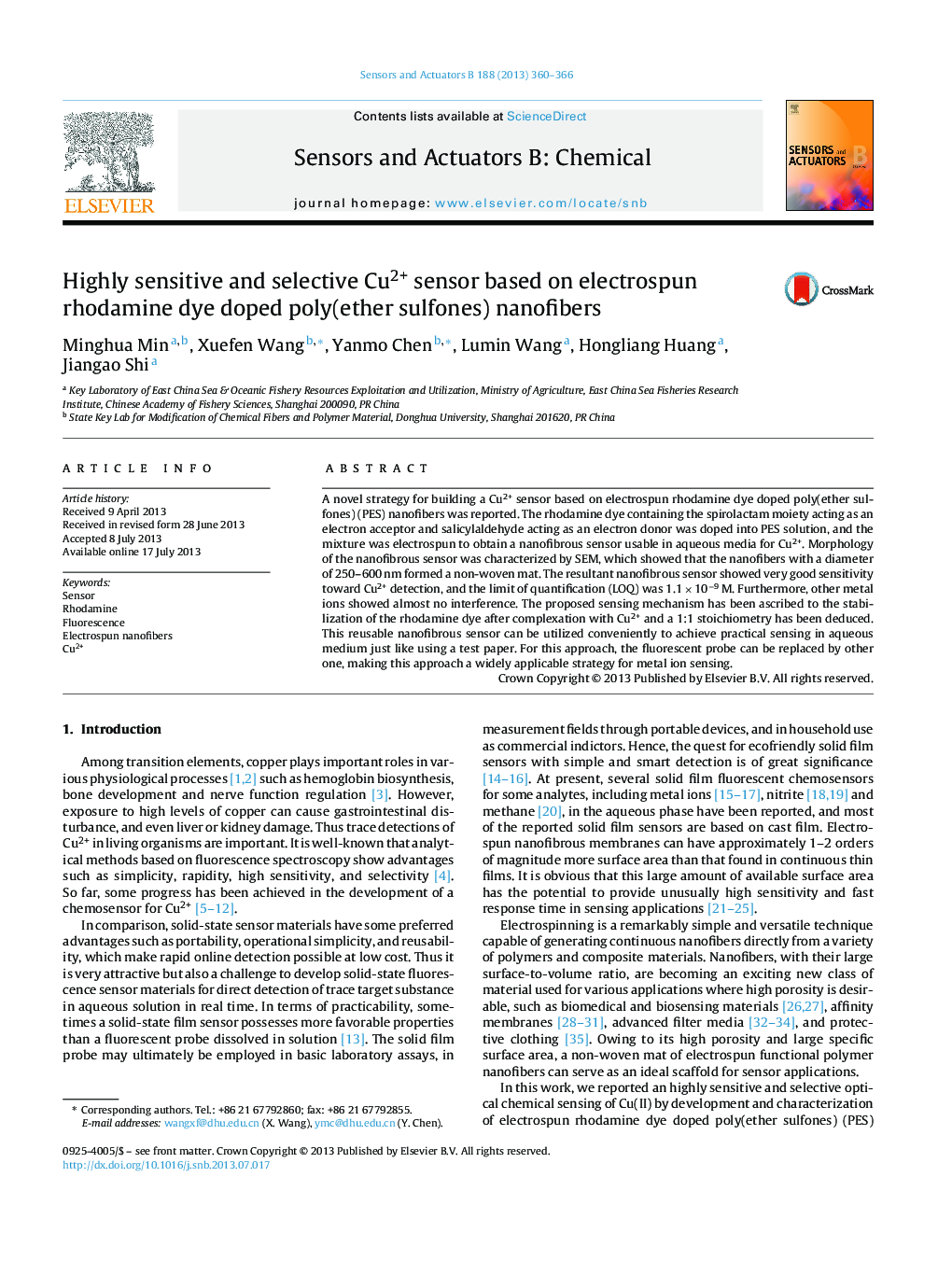| Article ID | Journal | Published Year | Pages | File Type |
|---|---|---|---|---|
| 7148385 | Sensors and Actuators B: Chemical | 2013 | 7 Pages |
Abstract
A novel strategy for building a Cu2+ sensor based on electrospun rhodamine dye doped poly(ether sulfones) (PES) nanofibers was reported. The rhodamine dye containing the spirolactam moiety acting as an electron acceptor and salicylaldehyde acting as an electron donor was doped into PES solution, and the mixture was electrospun to obtain a nanofibrous sensor usable in aqueous media for Cu2+. Morphology of the nanofibrous sensor was characterized by SEM, which showed that the nanofibers with a diameter of 250-600Â nm formed a non-woven mat. The resultant nanofibrous sensor showed very good sensitivity toward Cu2+ detection, and the limit of quantification (LOQ) was 1.1Â ÃÂ 10â9Â M. Furthermore, other metal ions showed almost no interference. The proposed sensing mechanism has been ascribed to the stabilization of the rhodamine dye after complexation with Cu2+ and a 1:1 stoichiometry has been deduced. This reusable nanofibrous sensor can be utilized conveniently to achieve practical sensing in aqueous medium just like using a test paper. For this approach, the fluorescent probe can be replaced by other one, making this approach a widely applicable strategy for metal ion sensing.
Related Topics
Physical Sciences and Engineering
Chemistry
Analytical Chemistry
Authors
Minghua Min, Xuefen Wang, Yanmo Chen, Lumin Wang, Hongliang Huang, Jiangao Shi,
